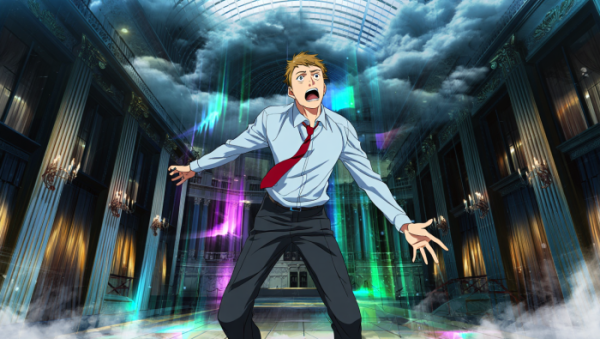
If They’re So Smart, Why Do Investors Still Panic Like Amateurs?
Updated Sep 1, 2025
There’s a certain swagger that comes with being labeled smart money: elite degrees, gleaming algorithms, six Bloomberg screens, and a corner office high above the noise. Reputation feels like capital; intellect, like armor. Yet when volatility blows out and the floorboards creak, the scene is familiar—our best and brightest race for the exits, leaving their logic trampled in the rush.
Why do sharp investors still panic? Because beneath the models and credentials sits the same limbic wiring as everyone else. When stress spikes, career risk, liquidity risk, and social proof collide, and the plan gets overwritten by survival instincts. Momentum tools—yes, even a humble stochastic oscillator—can flag capitulation, but recognizing it and holding your ground are different skills. What the market politely calls “capitulation” is often just herd behavior in thousand‑dollar suits: smart minds, primal reflexes, and a costly failure to stick to process when it matters most.
The Terrain: Where Intelligence Meets Instinct
Step into the engine room of a market in crisis. The air is thick—part recycled oxygen, part adrenaline, part recycled rumour. Monitors pulse with red, portfolios shrink by the hour, and the hum of nervous chatter leaks through every wall. No one is immune. The models—those elegant, back-tested fortresses—start to flicker. The risk reports, once ignored, have now become scripture. Eyes dart to the VIX. Hands hover over the sell button. It’s not stupidity; it’s survival. But it looks the same. Every trader, portfolio manager, and CIO, no matter how lauded for wisdom, feels the same ancient churn in the gut: Get out. Get safe. Don’t be the last donkey left.
Burro Theory: The Stubborn Crowd’s Hidden Law
The market’s burro theory is as old as speculation itself. When the going is smooth, everyone’s a genius—conviction soars, risk is a badge, and patience is marketed as virtue. But markets are not rational machines; they are behavioural echo chambers. When the dust kicks up, even the smartest players default to the herd’s most primitive logic. The burro—the stubborn, instinct-driven beast—takes over. And when it does, IQ points get trampled under collective panic.
The burro doesn’t move because it’s smart. It moves because the other burros are moving. The tragic comedy: the crowd of credentialed, data-driven investors devolves into a stampede no different from retail day traders on margin. The urge to survive drowns out the logic that built the very positions they now abandon.
Vector Shift: From Singular Genius to Tribal Panic
It’s easy to believe in one’s rationality, to think that higher intelligence or better tools inoculate against the errors of the masses. But panic is not a bug; it’s the system’s oldest feature. At the edge of chaos, the brain reverts to fight, flight, or freeze. The same dopamine circuits that fed on the rush of profits now flood the mind with dread. Loss aversion, that most ancient algorithm, hijacks strategy. In the instant, the calculus is simple: a small, certain loss is better than the terror of the unknown.
This is not stupidity; it is common sense, weaponised by evolution. The lesson of why smart investors still panic is embedded in human nature: the smart investor panics because the smart investor is still human—wired for survival, not for perfect optimisation. The brain that built the skyscraper portfolio is the same brain that, in a stampede, runs with the herd off the nearest cliff.
Pattern Chamber 1: The Mirage of Control
Every investor believes, deep down, that they have some measure of control. Models, scenarios, hedges—these are rituals to tame the chaos. But when the tide turns, the illusion shatters. 2008, 2020, the Asian Flu, LTCM—every major crash is a masterclass in control’s collapse. The models fail. The correlations invert. The risk-off assets suddenly don’t bid.
What happens next is pure donkey: the urge to do something, anything, overwhelms the discipline to do nothing. Cash is raised in a panic, positions are dumped at the lows, and the lesson is always the same—control was a story, not a reality. The market punishes the illusion by forcing the smart to act dumb, to sell what they should keep, to buy what they should shun. In the aftermath, the post-mortems are always littered with the phrase “unprecedented volatility.” But the behaviour is always precedent, and always predictable.
Pattern Chamber 2: The Feedback Loop of Fear
Fear is contagious—viral, exponential, and indifferent to credentials. As soon as the first major player blinks, the rest scan for exits. The feedback loop spins up: selling begets more selling. Risk managers call for de-levering, VaR models scream, and the narrative shifts from “opportunity” to “survival.” The smart investor, now trapped in the same psychological vice as the crowd, becomes indistinguishable from the herd.
The market’s memory is short, but its reflexes are fast. In every crash, you’ll see the same pattern: the first few exits are dismissed as overreaction, the next wave becomes contagious, and then, suddenly, everyone is running. The so-called “dumb money” and “smart money” merge into one stampede—donkeys in pinstripes, braying in unison.
Pattern Chamber 3: The Tyranny of Consensus
Consensus is a comfort blanket, especially for the intelligent. When things fall apart, being wrong together is less painful than being wrong alone. This is herding at its sharpest—when the fear of isolation overpowers the drive for independent thought. The tendency is amplified among experts, whose reputations are built on not making “career-ending mistakes.” Better to panic with the herd and survive than to stand alone and risk exile.
This is why “risk-off” is so universal in crises, why “de-risking” becomes the mantra. The weight of consensus blunts the smart investor’s edge. In the heat of the moment, conviction crumples under the pressure of narrative. The safest trade is the one everyone else is making, even if it’s wrong. This is the paradox of institutional investing: the higher the stakes, the more tribal the behaviour.
Pattern Chamber 4: The Siren Song of Recency
Humans are pattern-seeking creatures, but in panic, the most recent pattern becomes the only pattern. If yesterday was bad, today will be worse. If selling worked for the last guy, it will work for me. This is recency bias, and it’s the engine of market overreaction.
The smart investor, no matter how experienced, is not immune. In the chaos of a crash, the mind narrows. The possible futures collapse into a single, doom-laden script. The donkey brain takes over, scanning for immediate threats, ignoring the bigger picture. The result: smart people doing dumb things, over and over, because the mind is desperate to escape the pain of uncertainty.
Pattern Chamber 5: The Anatomy of Regret
Regret is a strange teacher—sharp, immediate, and unrelenting. Every investor remembers the trade they didn’t make, the position they cut too soon, the rally they missed after bailing at the lows. Regret isn’t just emotional; it’s chemical, burning new neural paths that reinforce caution or, just as often, recklessness.
In periods of panic, regret becomes anticipatory. The smart investor sells not just to avoid loss, but to avoid the regret of not selling. This is why the best and brightest join the stampede—they’re not just fleeing pain, they’re fleeing the future ghost of “I should have known.” The market is a factory for regret, and in the heat of panic, regret drives the smartest to act like donkeys.
The Unforgiving Circuit: Panic, Recovery, and the Aftertaste of Stupidity
Panic never whispers. It punches the gut, scrambles the mind, and turns professionals into passengers on a runaway freight train. The aftermath is ritualistic: excuses, denial, spreadsheets retrofitted to justify failure. “We stuck to the process.” “It was an outlier event.” “Nobody could’ve known.” But deep down, they knew.
The circuit always completes itself—fear, reaction, regret. Markets bounce, portfolios recover, and the herd licks its wounds with the confidence of the amnesiac. But in the moment of rupture, everyone’s a donkey. MBA or message board trader—it doesn’t matter. Panic erases credentials. The only ones left standing are those who trained for the collapse.
Forget intellect. Forget pedigree. In the crucible, your survival comes down to process, preparation, and pain tolerance. It’s not a question of if the market will attack your blind spot—it’s when. If you haven’t stress-tested your beliefs under pressure, the market will do it for you, with interest.
The Warrior’s Edge: Outrunning the Donkey
1. Pre-Commit to the Pain
Set rules before emotion enters the room. Write them in peacetime. Define your max drawdown. Your triggers to cut, to hold, to double down. If it’s not written down, it’s improv. And improv kills under fire. When fear is flooding your veins, clarity is retrofitted too late. The donkey thrives on ambiguity. Kill it with contracts—made when your head was clear and your account green.
2. Run Rehearsals for Ruin
Drill disaster. Simulate -30% overnight gaps, liquidity blackouts, back-to-back circuit breakers. Play out the scenario where your top holding implodes and drags your conviction with it. Those who freeze die first. Warriors move in seconds because they’ve rehearsed the collapse like a fire drill. Panic is predictable. But only if you’ve bled in training.
3. Build Liquidity Like a Fortress
Cash is not a luxury—it’s an offensive weapon. The crowd views dry powder as a lost opportunity. Fools. Liquidity is optionality. It gives you range when others are cornered. When sellers get margin-called, you write the price. You are the bid. Warriors don’t hoard cash to feel safe—they do it to stay lethal when the herd has no ammo left.
4. Starve Emotional Reactions
Your P&L isn’t your identity. Your positions aren’t your personality. The market doesn’t know you exist—and it doesn’t care. The donkey takes every tick personally. The warrior detaches. Meditation. Journaling. Brutal post-mortems. Whatever it takes to observe fear without surrendering to it. Control your nervous system, or it controls you.
5. Inject Dissent Into Your Process
Echo chambers are comfort zones in disguise. Everyone agrees? Time to get suspicious. Build a circle of contrarian thinkers, signals that slap your assumptions, indicators that punch holes in your bias. The loudest consensus always forms right before the cliff. If your positioning makes you feel good, you’re probably wrong. Train your system to flag euphoria, not chase it.
6. Normalise the Whip of Panic
Fear isn’t failure. It’s terrain. You will flinch. You will second-guess. The edge isn’t in being fearless—it’s in being prepared anyway. The best traders treat fear like weather. It passes. You don’t yell at the rain; you build better gear. Every crisis is another feedback loop. Tighten your playbook. Harden your lines. Please expect to be hunted, and act like it.
Precision Tactics, Not Platitudes
Let’s be clear: this isn’t about self-help. This is warfare. The market is an ecosystem of predation. You’re either adapting or being eaten. There is no third lane.
- In 2020, the VIX spiked to 85. The Dow dropped 10,000 points in three weeks. Those who had dry powder made generational entries.
- In 2008, financials collapsed. Those with processes rotated into quality survived the storm and 10x’ed their recovery.
- In 1987, the crash came in one day, 22% down. The unprepared got vaporised. But those who had pre-committed entries and mental stop-losses stepped in amid the carnage and banked.
Every panic looks unique. They’re not. Different mask, same predator.
Field Notes From the Edge
- When you’re most sure of your genius, trim your risk. Euphoria is the enemy wearing your own smile.
- When volatility rises faster than volume, the trap is being set. Get small, get sharp.
- When you hear “this time is different,” understand: it’s about to rhyme hard.
Every investor has a donkey inside. That’s biology. But the warrior builds cages—rules, rehearsals, rituals—so it doesn’t break loose when the pressure hits.
The Final Coil: The Donkey in the Elevator
The Final Coil: The Donkey in the Elevator
In every crisis, the lights flicker. The chatter rises—some pace, some bark orders, some freeze completely. Then there’s the one investor who calmly checks their playbook, executes the pre-defined plan, and vanishes into the opportunity others were too scared to see.
That investor didn’t have a secret. They had a system, one forged with brutal honesty about why smart investors still panic when the pressure mounts. Every seasoned market veteran knows that the reason why smart investors still panic is not ignorance, but the gravitational pull of uncertainty—a force as reliable as gravity itself. To master the market, you must anticipate the next time, and the next, and the next, why smart investors still panic—because each cycle, the signals may change, but the primal responses do not.
Your panic response is programmable. You can wire your behaviour in advance—cold, hard, and lethal. Because when the elevator drops, it’s too late to build a parachute. You’re either falling with grace or flailing with regret.
The donkey panics. The warrior pivots. The market doesn’t care what you feel—only what you do when the circuit closes.










